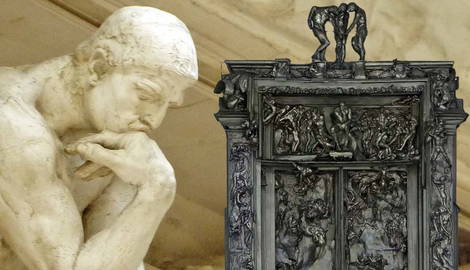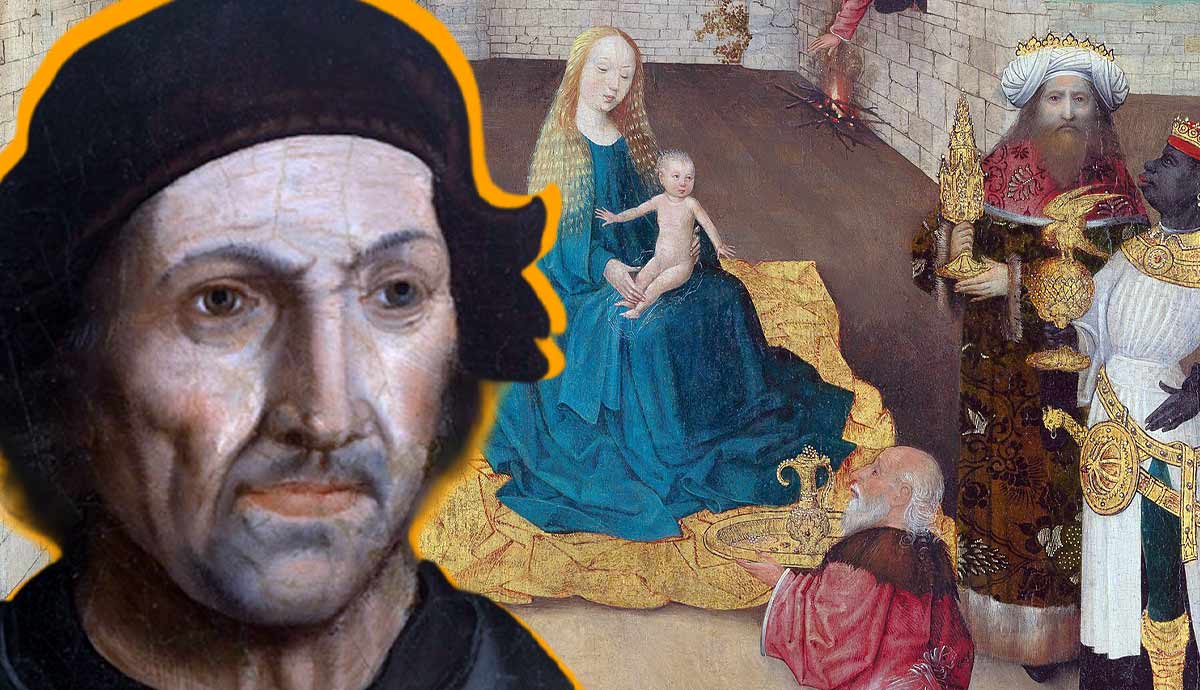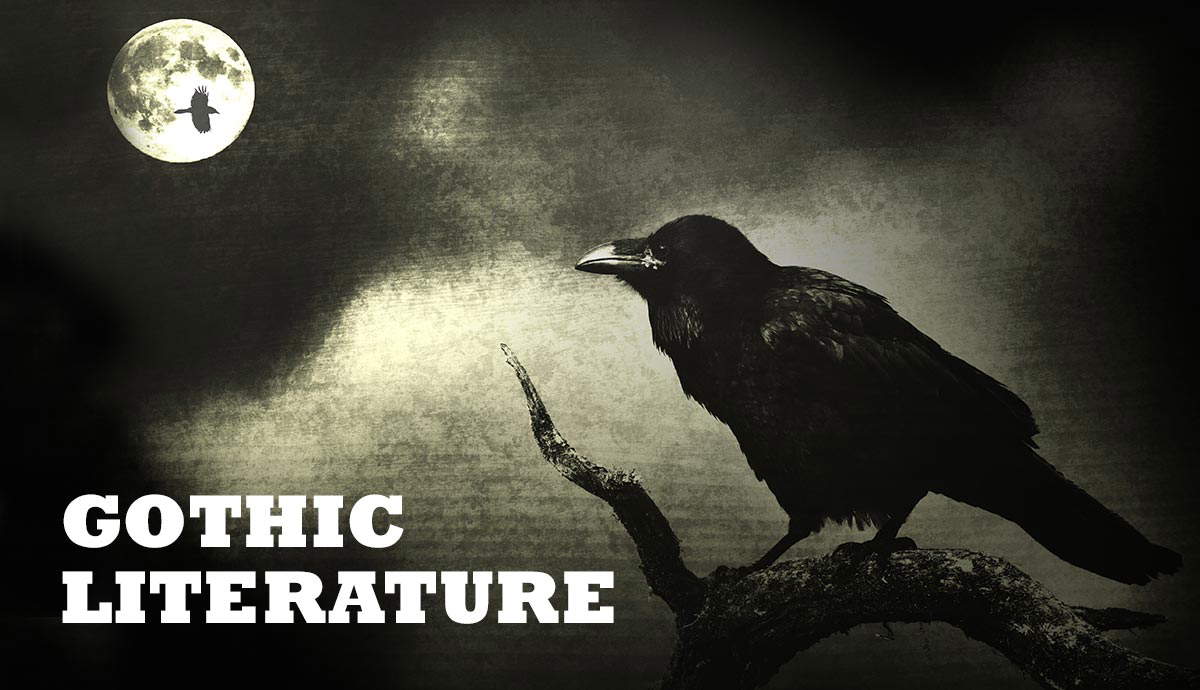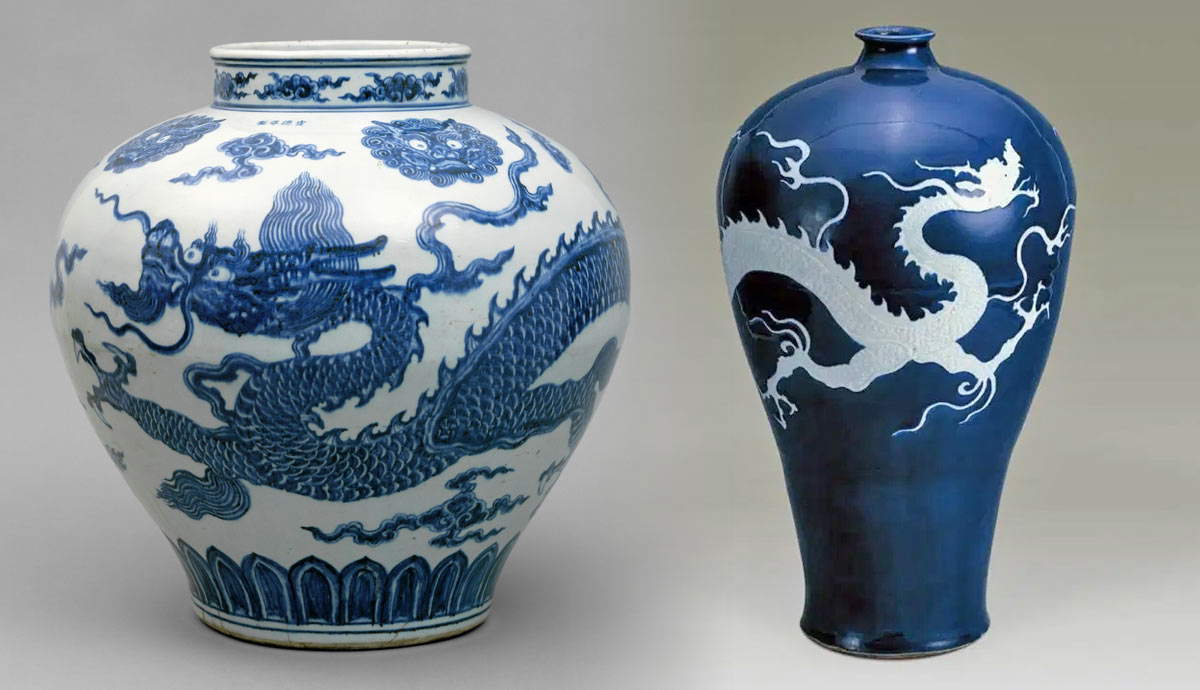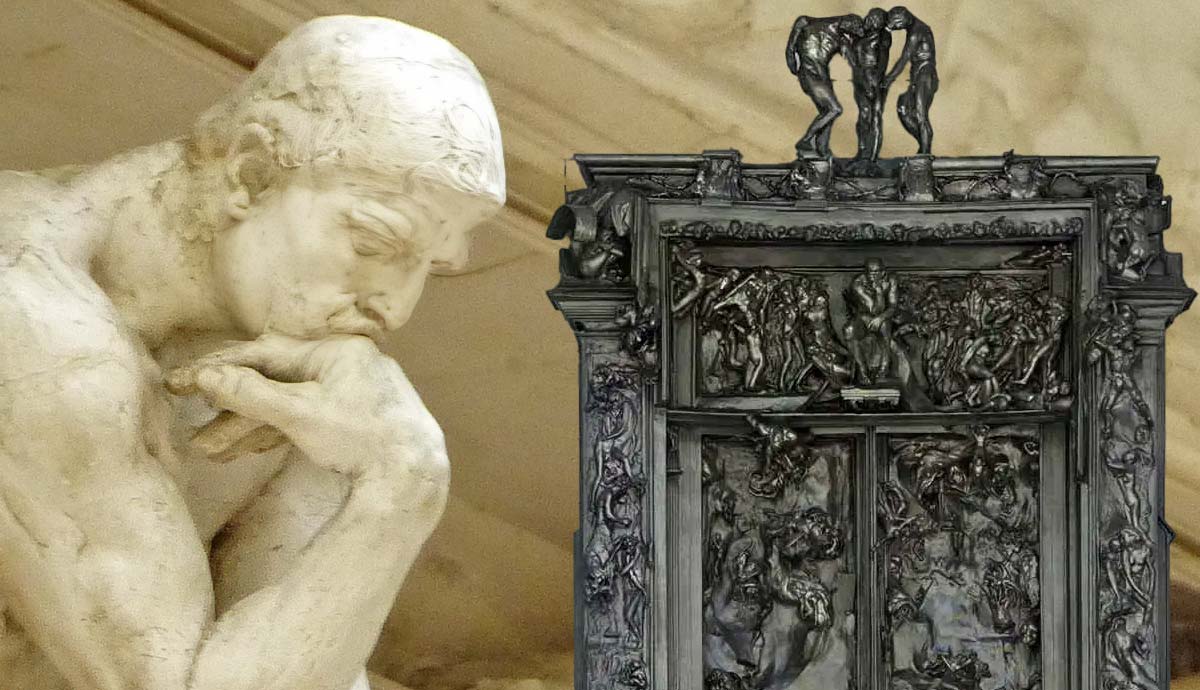
The famous French sculptor Auguste Rodin spent most of his life working on the monumental structure The Gates of Hell. Initially planned as an entrance door to the Decorative Arts Museum, it eventually gained a life of its own, inspiring Rodin’s most famous free-standing sculptures. The work on The Gates of Hell continued for 37 years, and was never finished. Read on to learn more about Rodin’s The Gates of Hell.
Rodin’s “The Gates of Hell”: The Unfinished Commission

The Gates of Hell is considered to be the masterwork of the famous French sculptor Auguste Rodin, who modernized the sculptural tradition in the late decades of the 19th century. The initial idea for the work was to illustrate Dante Alighieri’s Divine Comedy, one of the most influential works in the history of Western literature that affected both artistic and religious thinking. There, an ancient poet Virgil guided the author through Hell, Heaven, and Purgatory, reflecting the complex structure of scientific, religious, and moral knowledge available in the late Medieval period in the West.
In 1880, Rodin was still a relatively unknown artist compared to the status he would come to achieve by the end of the decade. Still, his early works began to gain recognition among colleagues and aspiring sculptors who came to practice and study in his workshop. One of the assistants who worked on The Gates of Hell with Rodin, for instance, was the famous sculptor Camille Claudel, who would eventually become Rodin’s partner. It is unclear to what extent the artistic vision of Claudel influenced the composition, but she was definitely responsible for sculpting the hands and feet of Rodin’s figures.

The monumental projects of The Gates of Hell started with a commission. Rodin was supposed to design an entrance to the Museum of Decorative Arts in Paris, planned by municipal authorities. The municipality did not require the precise design but wanted the gates to be inspired by Dante Alighieri’s Divine Comedy. Initially, Rodin was supposed to present the finished result in 1895 at the museum opening, and even received part of his payment and a studio to work in. However, as the due date approached, the work did not seem to stop. The sculptor returned the money to the municipality and continued his work on the gates for twenty more years. The Decorative Arts Museum was never built, and today, the original plaster cast of the gate is on display at Musee d’Orsay in Paris.
Dante Alighieri’s Vision of Hell

Dante presented his Hell as a detailed and complex structure divided into nine circles that surrounded the three-faced Lucifer trapped in ice at the center of the earth. Each circle was reserved for a specific type of sinner with their punishments related to their deeds. For instance, sorcerers are punished by being forced to walk with their heads turned backward. In their lives, they tried to look beyond the present and predict the future, and in death, they had to always stare into their past, unable to see what was in front of them. The deepest and the coldest circle of Dante’s Hell is reserved for traitors and betrayers, including Judas, who betrayed Jesus.
Initially, Rodin intended to illustrate specific passages and fragments of Dante’s Inferno, yet later discarded this idea in favor of more generalized images of human suffering, desire, and emotion. Apart from the Medieval mindset of Dante, Rodin was clearly influenced by Symbolist aesthetics and the decadent poetry of Charles Baudelaire.
The Structure

The Gates of Hell consists of 186 individual sculptures. Several dozen others were rejected by Rodin during almost four decades of work on the composition. Rodin’s composition has a complex structure that is not subject to the laws of gravity and perspective as the scene unfolds beyond the limitations of the physical world. On the top of the gate, there are three figures of lifeless shadows that originally were pointed at the famous quote from Dante: “Abandon all hope, ye who enter here.”
However, Rodin omitted the text, instead placing an allegorical sculpture of The Thinker over the opening part of the gates. The two doors and the frame are covered with multiple figures referencing Dante, and some of them are actually identifiable as his characters. At the bottom of each door, there is a tomb that suggests the termination of one’s path upon entering Hell.
The Most Famous Fragments: “The Thinker”

The Gates of Hell is the perfect example of an artwork that accompanied the entire creative life of its author from its beginning to his last days. It also incorporates almost every figure, subject, or idea that was ever explored by Auguste Rodin. Particularly, it contains figures that became known as Rodin’s most famous sculptures independently, without being integrated into a larger sculptural context.
The Thinker, one of the most renowned and recognizable sculptures made by Rodin, found its place at the center of the composition, right over the doorway. It is slightly larger than the rest of the figures depicted and, most likely, was supposed to refer to Dante himself, observing his literary creation coming to life. Generally, The Thinker (alternatively known as The Poet) represents the melancholy and doubt that haunt every creator, as well as the nature of artistic creation that consumes its master and develops a life of its own. It could also refer to Adam, the first man, observing the destruction of humanity as the result of his sin.
“The Kiss”

Surprisingly, Rodin’s famous image of a couple embracing each other in a passionate kiss was initially supposed to become part of the Gates ensemble. The composition initially depicted Francesca da Rimini, an Italian noblewoman who fell in love with her husband’s brother Paolo. Both Francesca and Paolo were killed by Francesca’s husband, who discovered their affair.
Although Rodin initially included The Kiss into the composition, he later found it too sensual and conflicting with scenes of suffering and decadence evident in other sculptures.
Rodin’s Self-Portrait in “The Gates of Hell”

Among many figures present in Rodin’s complex arrangement, there was one that is usually recognized as his self-portrait. A crouched figure of a man is almost invisible in comparison with other elements as it was made in low relief. One hand of the figure supports the man’s head, suggesting a pensive gesture, and the other holds a much smaller feminine figure. The visual facial features of the man corresponded with descriptions of Rodin’s appearance by his contemporaries.
Art historians who studied The Gates of Hell have given the figure the name The Creator, linking it to the Christian God’s act of creating the universe and humans, and Eve shattering the pre-planned order of things with her decision to commit the first sin in the history of humanity. In the context of Rodin’s self-portraiture, such a figure could have represented the melancholy of an artist and his complex feelings toward his own creation. Some experts then explained the presence of a female figure with the personification of creative thought and inspiration.
“Ugolino and His Sons”

The story of Count Ugolino della Gherardesca, described by Dante as the resident of the lowest circle of hell, was a chilling one. A politician in his native Pisa, he was accused of alleged treason and imprisoned together with his children and grandchildren. All of them were left to starve, and, according to Dante, Ugolino survived for nine months by eating the bodies of the family members who died first. In Rodin’s version, “The Cannibal Count,” as Ugolino was remembered, was shown on all fours as if to highlight his non-human nature after everything he had done.
Were Rodin’s “The Gates of Hell” Ever Finished?

Most researchers agree that despite 37 years of work, Rodin never completed The Gates of Hell and likely would continue to transform it even if he had more time. The sculpture remained a plaster cast, and the existing bronze versions were created only after Rodin’s death. No sculptor before him dared to make an artwork of similar scope and complexity, and few tried to surpass Rodin’s ambition. Some art historians believe that Rodin’s idea was transforming along with his real-life experiences. The trauma of World War I, which Rodin experienced during the last years of his life, most likely affected his understanding of suffering and torment.
